I did think it through thoroughly when buying my used sailing yacht end of September last year by starting my Yachtmaster-education: Should I learn how to sail the classic way by beginning with a yawl or – by skipping this small boat – stepping in by taking classes for yacht-sailing on bigger sized craft? Richard Jeske, owner of my sailing school, did have some very interesting arguments (read full article here) which convinced me to opt for the classic way. So, last weekend the class for learning to sail started with two consecutive days in sailing school at the shores of the Baltic Sea in Heiligenhafen: This is what I´ve experienced as a rookie sailor first time sailing alone.
Less talk – more sailing
Well, let´s put it this way: I wasn´t too much that rookie. My class consisted of four persons: Three women and me. Despite the fact that this constellation proved to be a constant source of jokes, much fun and plenty of jokes, I would first recommend anybody considering taking a sailing class to seek a sailing school that grants small class sizes: Your skipper-teacher will have much more time spent on yourself. When we gathered on a perfect sunny – yet a bit chilly – Saturday morning in class our skipper-teacher Ralph of sailing school Bennewitz started by introducing us to the very basics of a sailing yacht: Standing rigging, running rigging, hull and rudder.
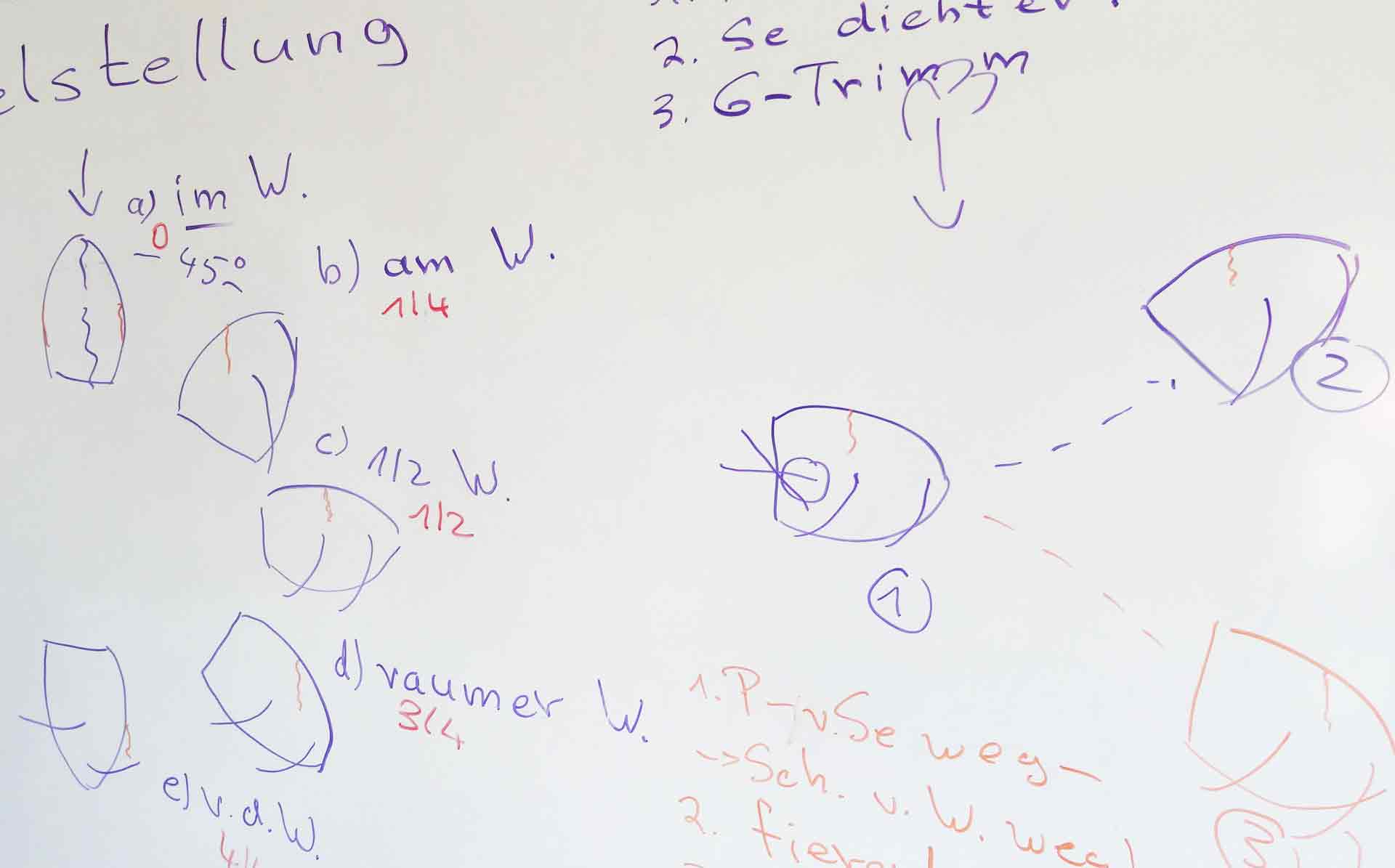
The basic terms (starboard, port, bow stern and so on). In doing so, he was able to determine the level of preparatory training of each of us. Two did have experience and knowledge (myself and one participant), another one did have some knowledge though no experience and the fourth didn´t have had anything at all. Showing everything by drawing at the whiteboard and having a functional model of a sailing vessel handed out his lessons went straight into our heads right away: Learning made fun. Trying to do some of the essential knots in between was welcome diversion with a purpose: By doing knots he could repeat the lesson by appealing to the unconscious. Clever. I was longing to get outside to the boats, again and again looking through the wide windows.
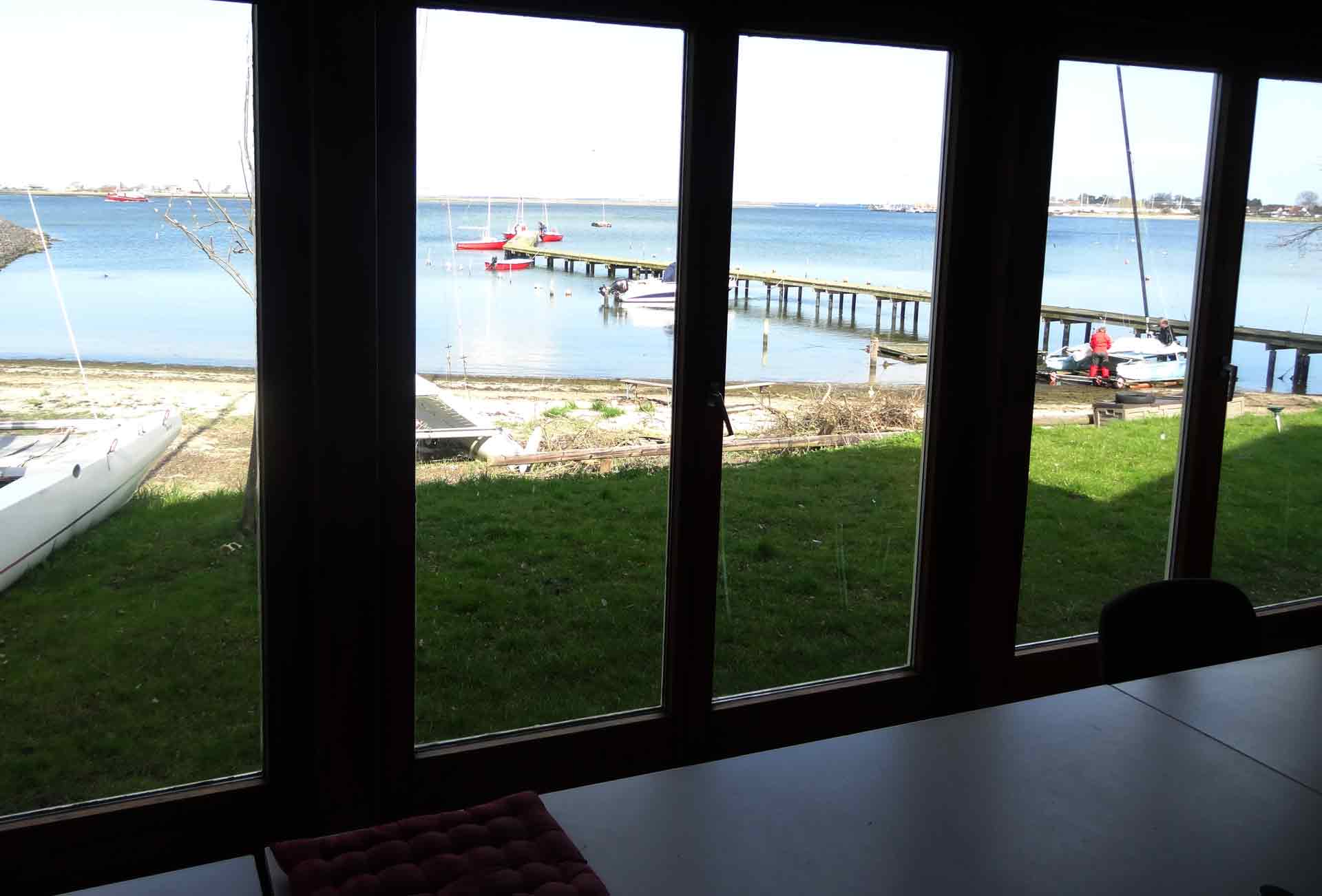
After completing my first two days in school here I will later fully understand the concept of teaching, but sitting there in the first place it was all a lot of fun, expectations and this feeling of pins and needles of a long curbed dream starting to come true: Learn to sail. After just thirty minutes or so of explaining the basic functions of the boat we dressed up and off we were to prepare one of the yawls. It was both exciting and surprising to see the educational concept paying off – it was a no brainer for all of the four pupils – even the two without any prior experience – to prepare the boat for casting off. Chapeau! Second hint: Ask the sailing school for the educational concept: If focus is on learning by doing, that´s far better than endless talk. This would be going to be less effective.
Learning to sail a Yawl
Our boats. The yawls. I was expecting shaky wiggly small craft. But when we saw the boats we were surprised: Not those small, nervous craft I expected but a rare type made in France – the Lanaverre Menhir. Our skipper, Ralph, stated he loved these yawls for being perfect for sailing schools: This 4,75 meter long boat offers a very wide cockpit which will accommodate four pupils and the skipper perfectly, leaving enough room for showing maneuvers and all kinds of associated action. My third hint for rookies would be to have a look at the sailing craft on which training will be executed – bigger is better, especially when it comes to small craft.
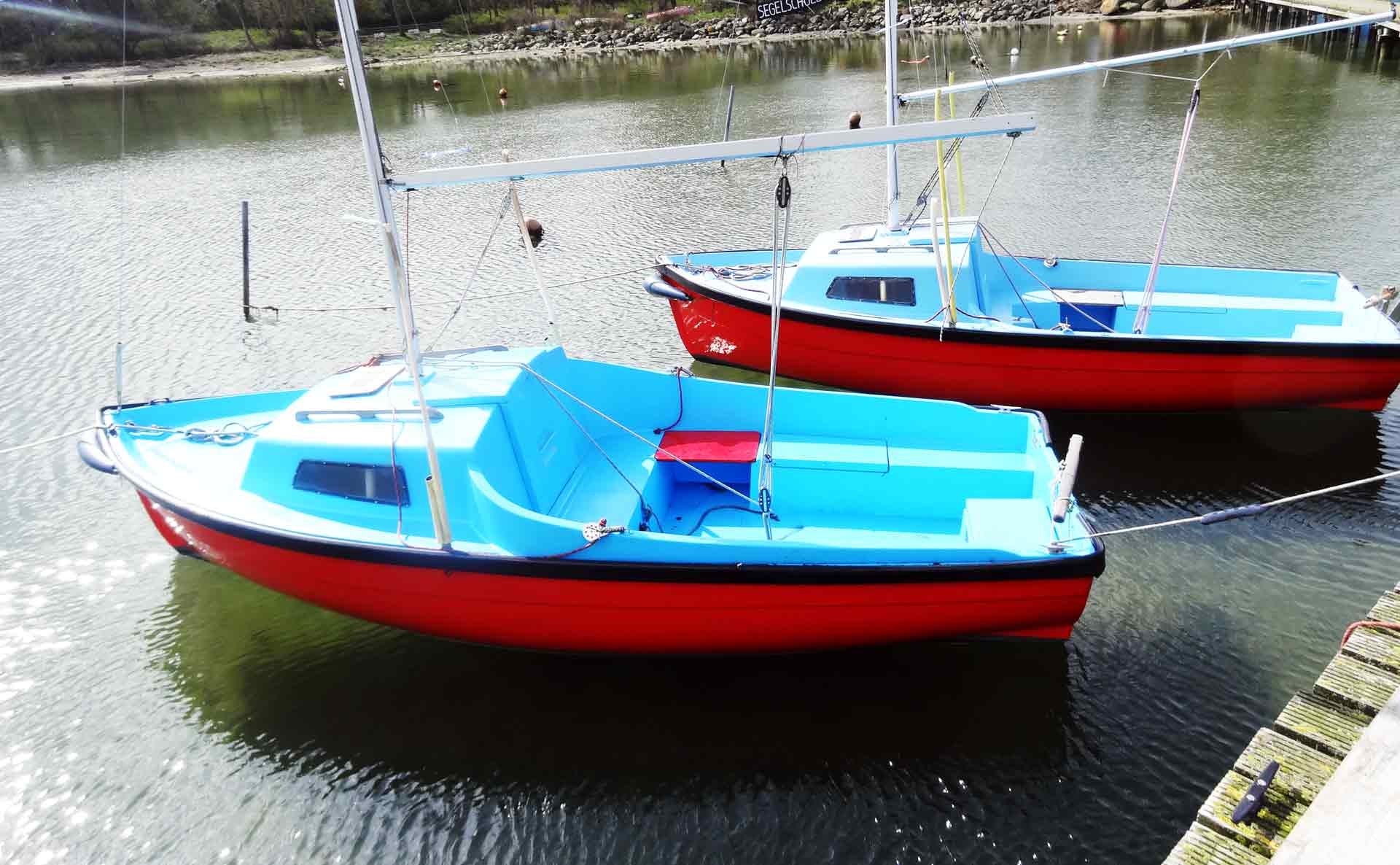
After preparing the boats we were casting off and had three hours of sailing. Basic stuff: Controlling the fore sail and the main sheet, steering the boat and trying to control the vessel by sailing at various angles to the wind. Which was a bit tricky: 4 Beaufort, gusts with 5 and local phenomena (even on the small course not bigger than 500 to 500 meters) did pose some challenge to the newbies. I´ve had quite some fun in riding out the gusts and applying my fresh knowledge with a common sense and “feel” for the boat – our two bloody freshmen (freshladies) did have some trouble, but Ralph put an extra effort in letting them two steer more and longer and simultaneously distributing a calm mood even when heeling during the frequent gusts provoked some squeaks. Fourth tip for finding the perfect sailing school: Talk with your future teacher and try to stay away from choleric drill-instructors. Look out for a sympathetic skipper-teacher, do a blog-research and try to gather first-hand ratings from former pupils.
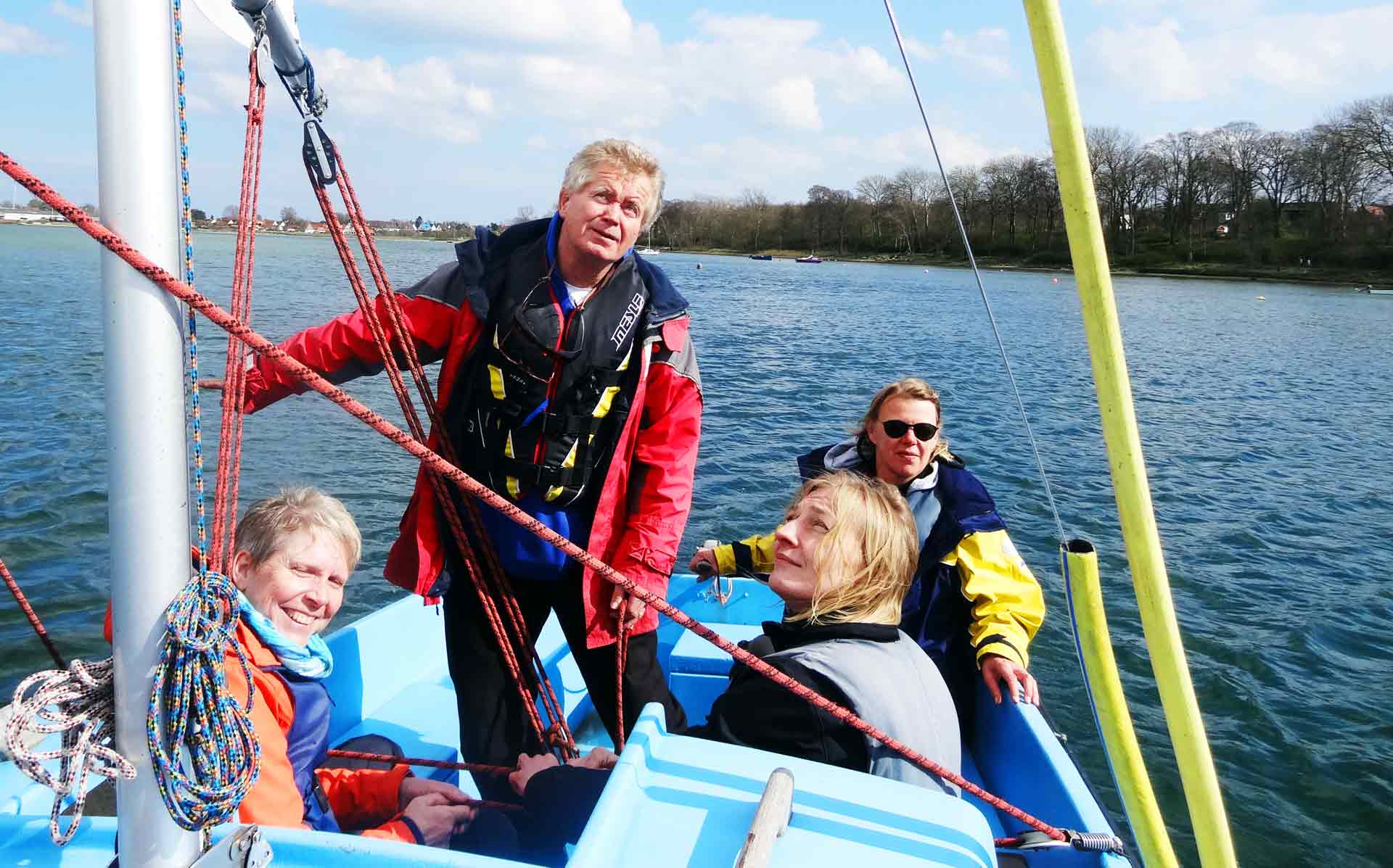
We were sailing different courses and learned very quickly what it meant to sail close hauled, in a reach and by running before wind. What it feels like to have rudder and mainsheet at hand, to feel the power of the wind, the flow and pressure on the rudder. Even when acting as bowman, skipping lee-sheets to close haul the fore sail was of utmost importance. We were rotating all positions and time fly by like nothing. Weather was just perfect: Clear blue sky, 14 degrees Celsius and – as I would judge – just perfect sailing conditions. Not too calm, just perfect to have some “music” in the ship.
Tell-tales and the Points of Sail
After having a rich meal and a one our break we returned to the classroom for the next briefing. Ralph explained what a tack in theory means. Going down the jetty to have the yawl casting off again we had to change sails for the smaller storm-canvas due to the fact that wind had freshened and so did the gusts as well. Sailing under storm sails proved to be the right decision: Less concern for the gusts and more brain power to learn to do the maneuvers.
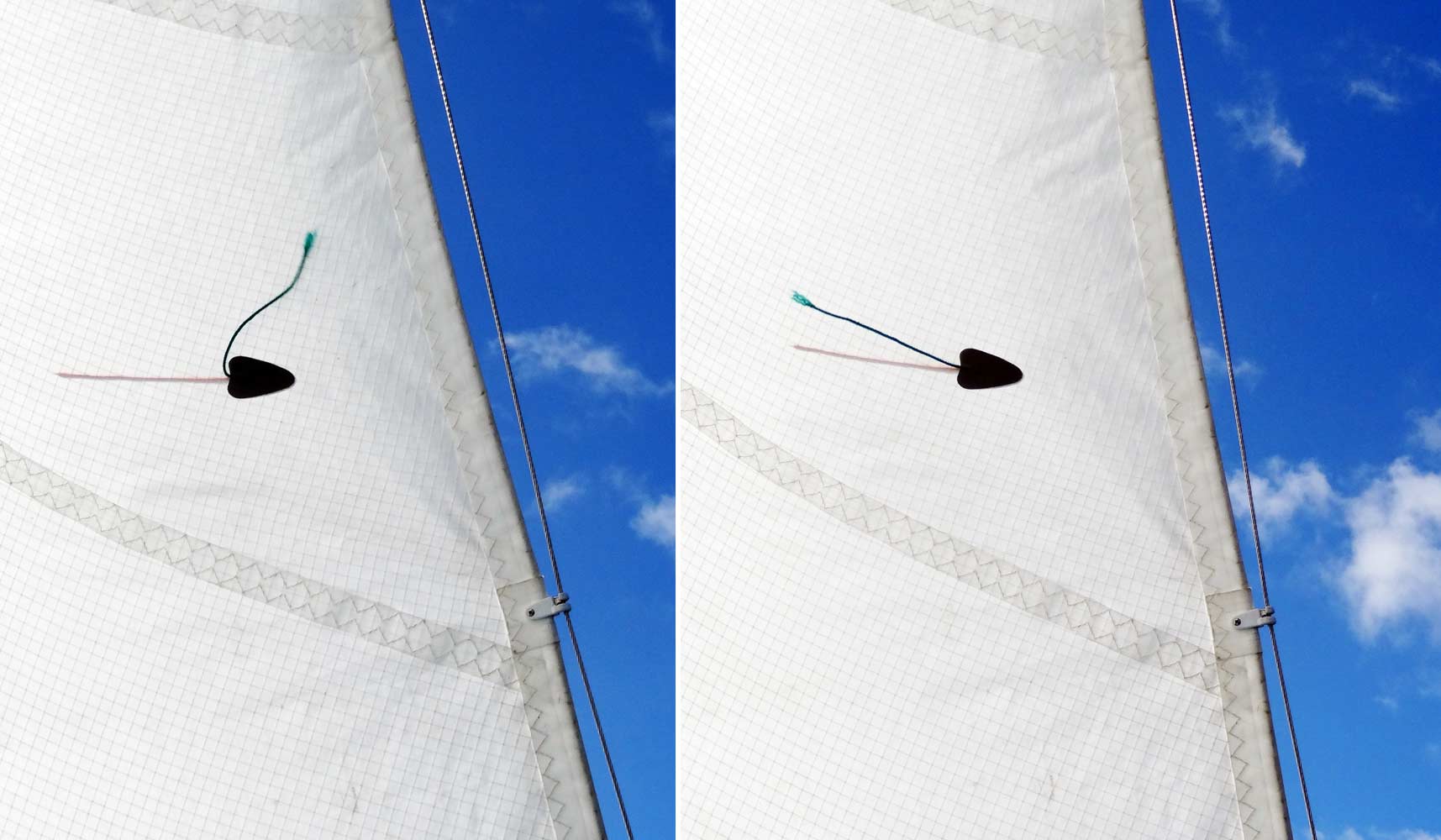
Trembled to have the tell tales in parallel, the two freshmen – as I would judge – had been too much focused on getting done everything by the book just perfect. I did have a different approach: By orienting towards the aim – “steer to this point” or “keep clear of the fair way to come around at this point” – I hauled or eased the sheets by trying to get a feeling for the perfect trim of the sails. Sensing the wind in my face, it was the tip of my nose I consulted more than just having my eyes nailed in the tell-tales and the Windex. This would be my fifth hint: Relax, enjoy. Your are here to have fun in the first place. Don´t be driven by a pressure to succeed, don’t just think of the exam and stuff.
Learning by doing: The Educational Concept
At the end of the first day we recovered sails and left the boat – exhausted but excited. It was astonishing how much even a bloody rookie can learn when instructed the way we have been: Learning by doing. I began to understand the concept of Ralph and I was so much looking forward to have the night passing by to be able to cast off again. I´ve found a very deep and good night´s sleep and when we´ve had our first coffee the next day Ralph had a surprise: Change in plan. The wind had even further freshened up – a steady 5 with gusts to 6, less water in the marina: “We will leave home waters and train in the next bay. So this means running before wind in the fair way.” Isn´t that exciting?

Preparing the boat alone – Ralph stayed in school until he saw we´ve had raised the mainsail – he came up to the mooring, pushed away the boat and said: “You four steer alone – the course of yesterday, everybody has to do two tacks at least, return when finished, then we go on as briefed.” Wow! Alone on the boat: That was provoking some heartbeat for some of the crew, for some (me too) it was just exciting! Doing the tacks – even in the midst of fierce gusts – was a no brainer and we soon returned to the jetty. Ralph was visibly pleased. Together we casted off again, I was the lucky one to have the boat running before wind, holding course by bearing the red buoys for having our URANUS named yawl sailed into the neighboring bay. Tip number six: Does the educational concept comprise a learning strategy that favors teamwork and learning-by-doing? Go for it!
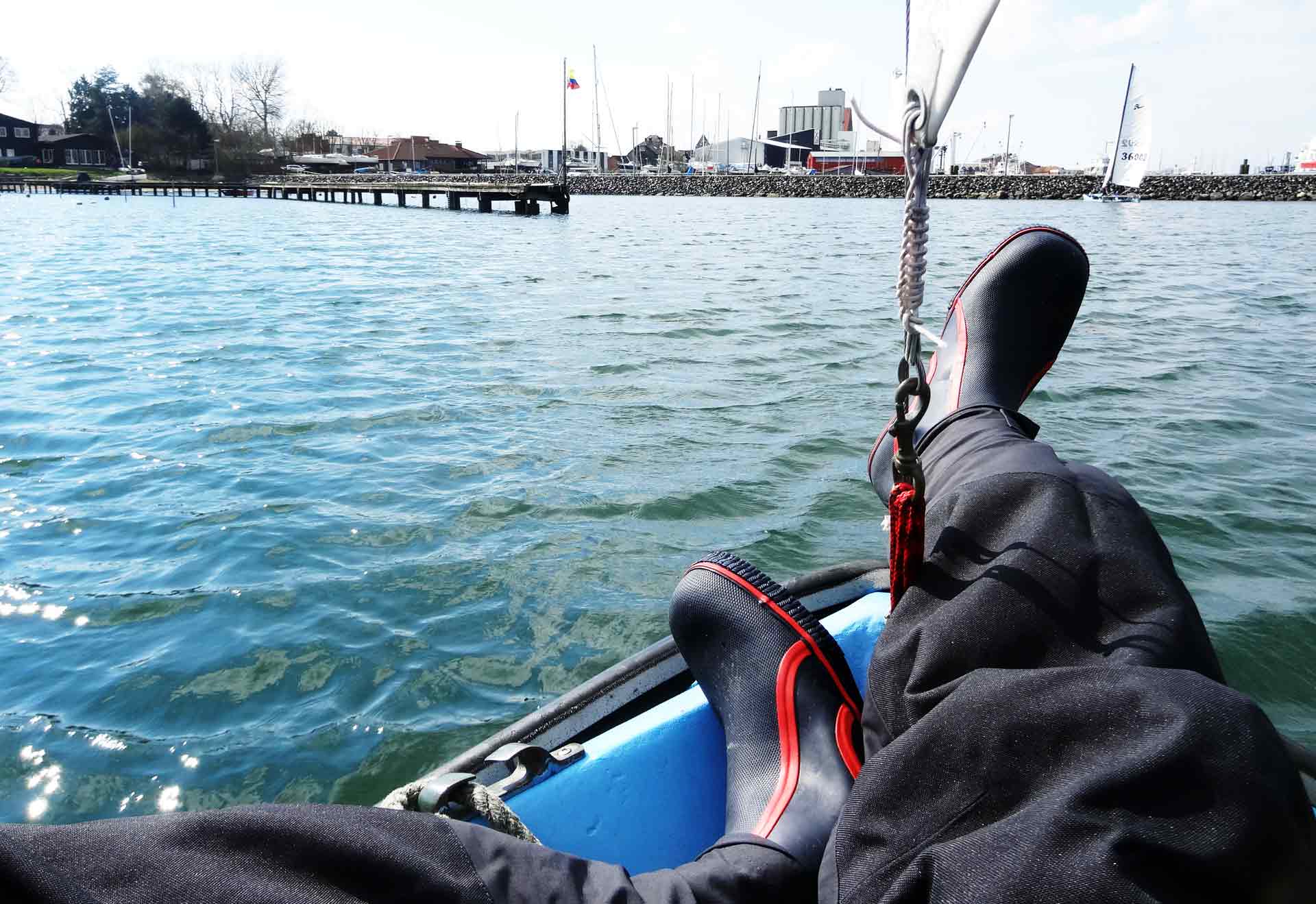
It may sound a little frightening at first, but believe me, sailing is a thing you have to do by yourself, taking responsibility for a ship and the crew is something you should learn in the first place. Left alone to experience this without the skipper-teacher (after he has a certain trust in your abilities) is key. After smooth sailing before wind we arrived at the training ground: A wide open bay area. Here we wanted to have the gybe trained. But gusts and swell had been even stronger here. Change of plan again. Since the gybe is the more critical maneuver – for a rookie – and even under reduced sailing power by having trysail and stormsail set Ralph judged it to be too dangerous to do the gybing stuff. So we´ve got the chance to deepen our sailing skills by practicing tacks. A lot of them. “Set course to home port!”. Oh my …
5 Beaufort and 179 Tacks to Home Port
The clever training concept did pay off again: Ralph didn´t explain what beating and making headway when close hauled meant in theory. He just said we´ve had to return home and waited what we decided to do. Tacking was the natural maneuver (and the only thing we were really able to perform) and making headway against the wind the consequence. So rotating at the helm everyone learned by experiencing it what it meant to lose some headway due to a blown maneuver and to gain height by reaching the next buoy of the fair way. Learning by doing. And by experiencing success as a team.
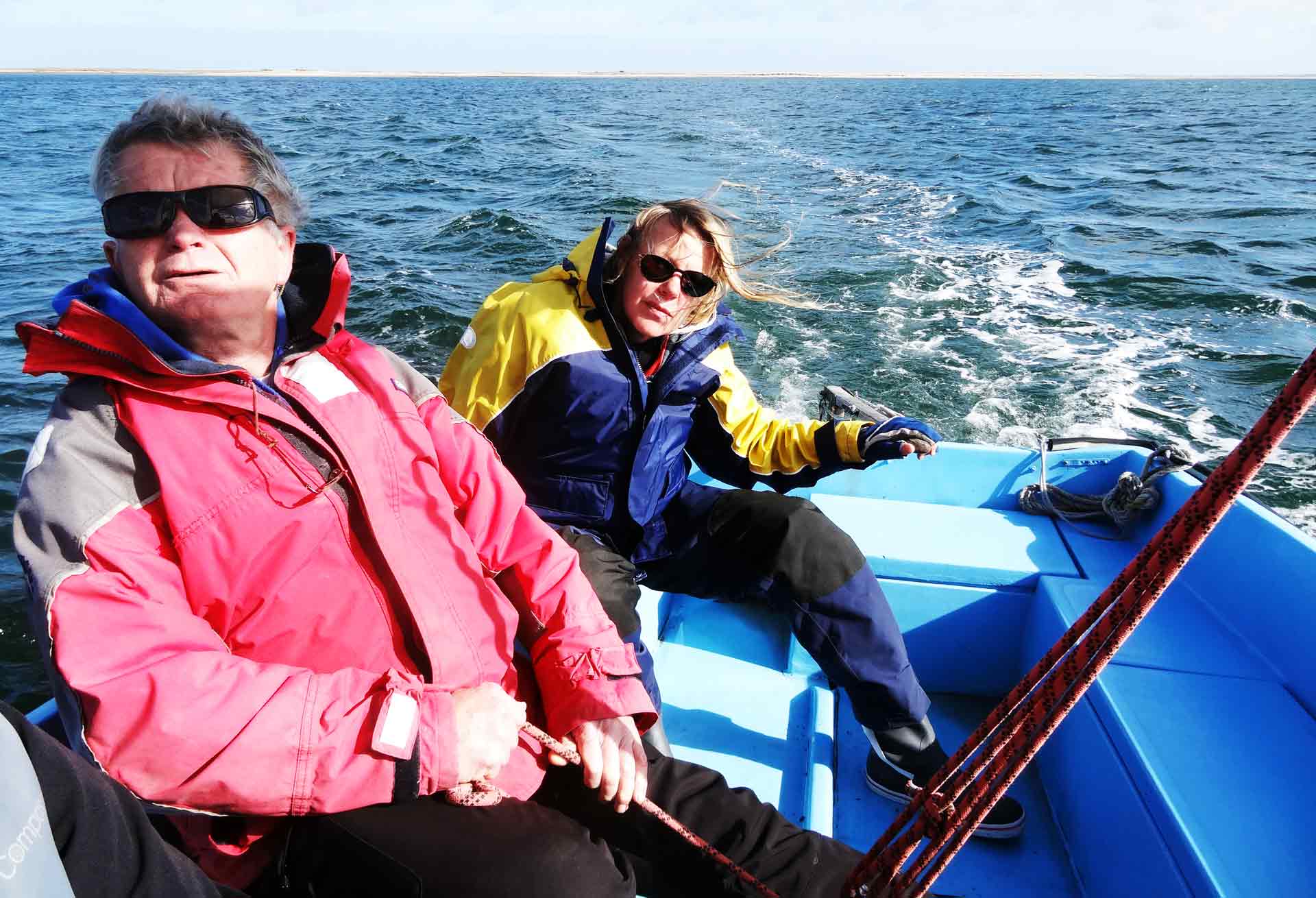
Tacking in these conditions was a physical effort. Having to tack inside the narrow fair way even more difficult. By having traffic there too – some yachts, three or four fishing trawlers and even the Coast Guard – we had to think about having the tacks timed perfectly to not hinder the other ships. It was pure fun and exciting sailing! My seventh hint: Sailing is fun. Try to identify a sailing school that want to mediate the love for ships, water and nature. Respect for the Sea, other sailors and above all the joy that lies within sailing will nurture your passion for the sport. This is what sailing should be all about.
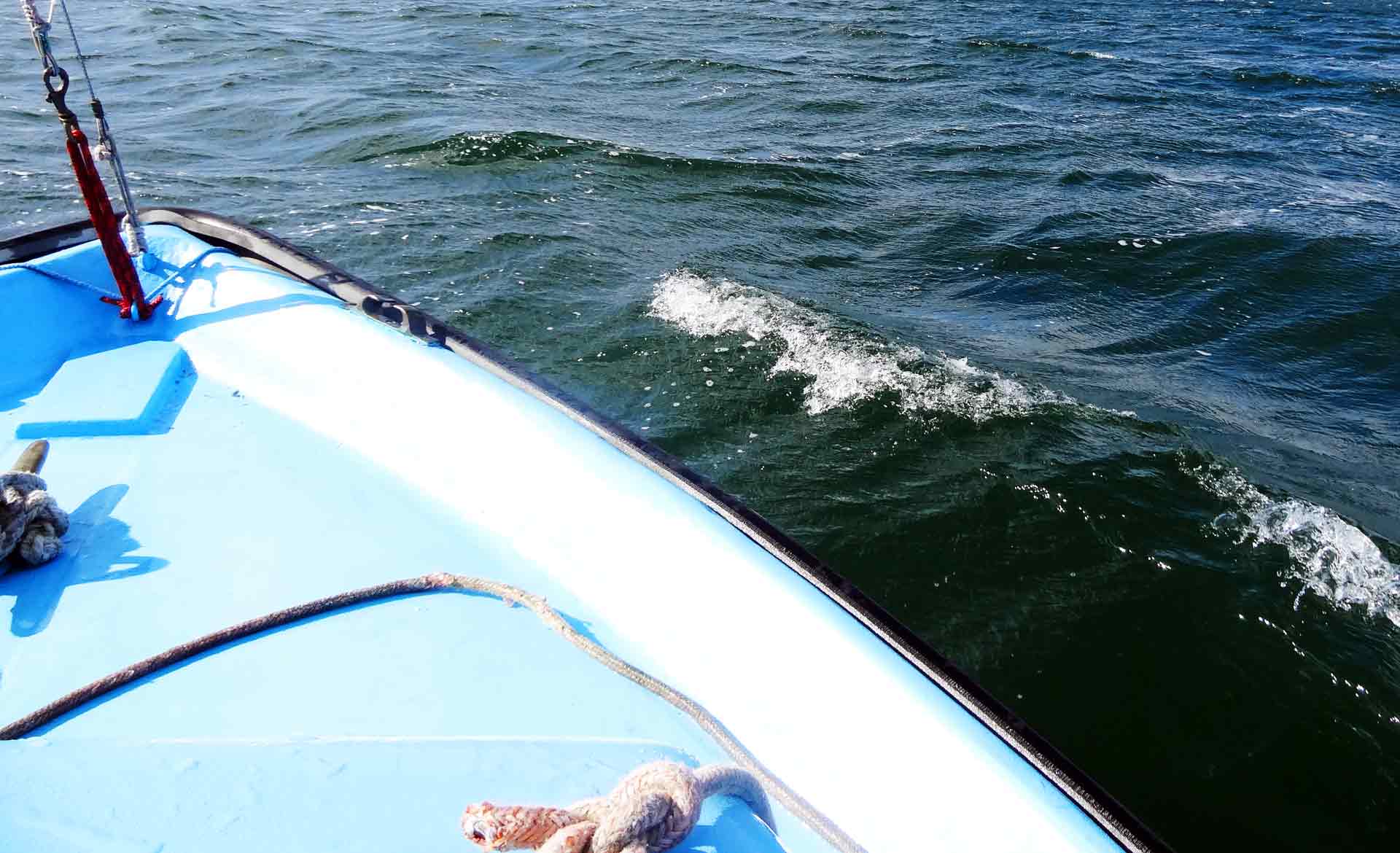
After having spent two watches at the helm and doing not less than 20 tacks in my shift I was destined to be responsible for the berthing maneuver by handling the bow rope and fender. So I went to the fore deck in time to spend some 30 minutes holding to the forestay and enjoying the sunshine in my face, the salty spray and fresh wind. It was pure fun and joy!
First Weekend done: What I´ve learned
After the break we returned to the class room where Ralph explained by drawing again to the whiteboard what casting off in reality means. And this was the point when I realized how clever the whole method of training was – in doing the maneuvers in real before having them explained, we have been able to experience the practical side of sailing in the first place. Repetition created self-confidence and a certain skill. By explaining the theoretical part afterwards it provoked this “I see!”-effect and avoided the pressure to fulfill a certain requirement when done in altered order. This is just plain and simple: Clever! Eighth tip for your future sailing school: Actual sailing and stimulation of learning by intuitive experiences should be promoted. Not the perfection of dusty by-the-book-rules.
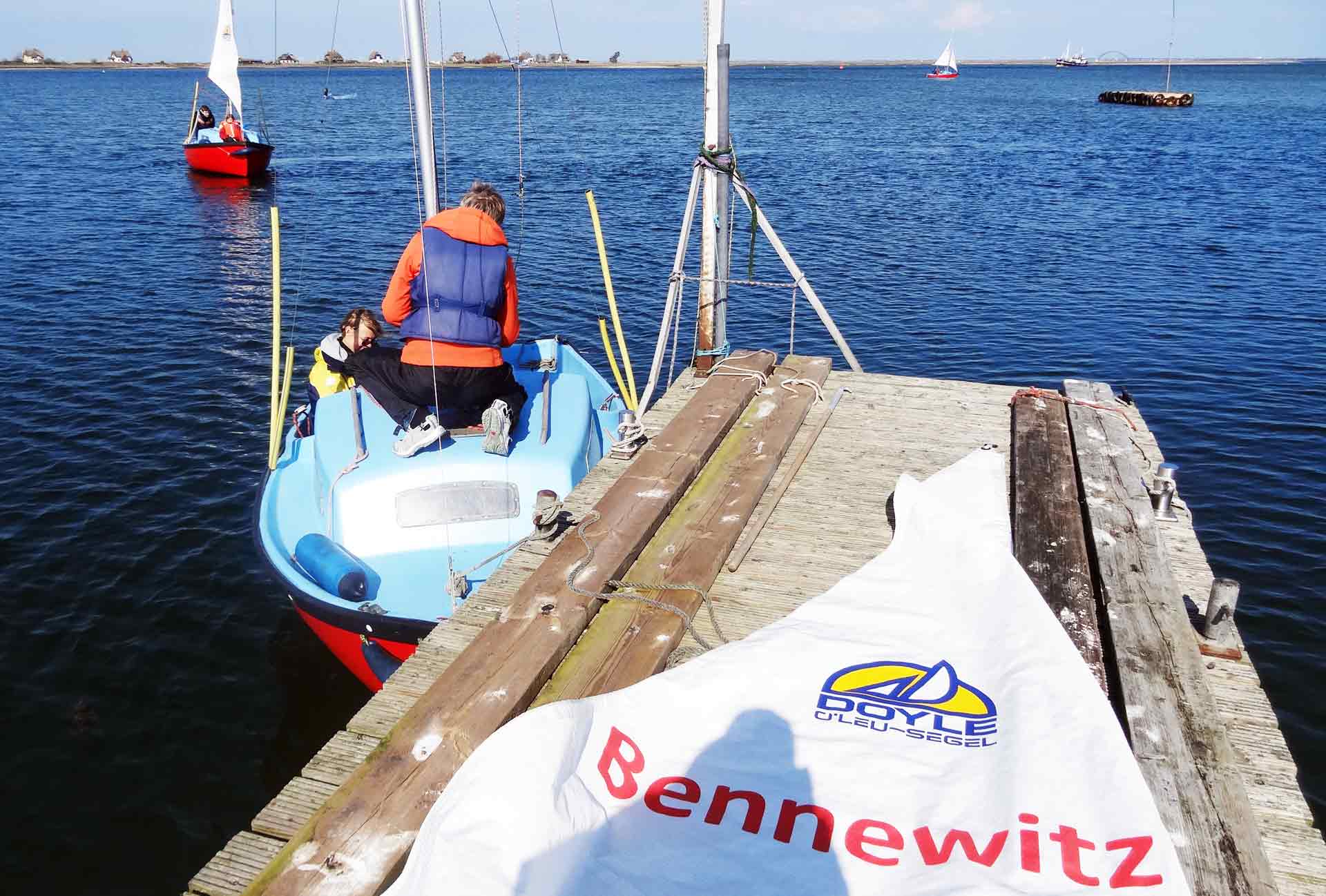
So to conclude the second day we set sail again and Ralph didn’t dare to come aboard at all: He remained at pierside handling our bow line: “Everybody will do the cast off-maneuver two times, sail to this point, tack and land here again.”, was his orders. So we performed (more or less) controlled casting offs, sailed out into the bay (by being exposed to both a calm and a very gusty area, provoking the application of sail-controlling skills, easing the sheets immediately and stuff) to return and head up in irons to hopefully come to a standstill right in front of Ralph. Sometimes we succeeded, even less we´ve had to go for an extra ride (which was very welcomed of course).
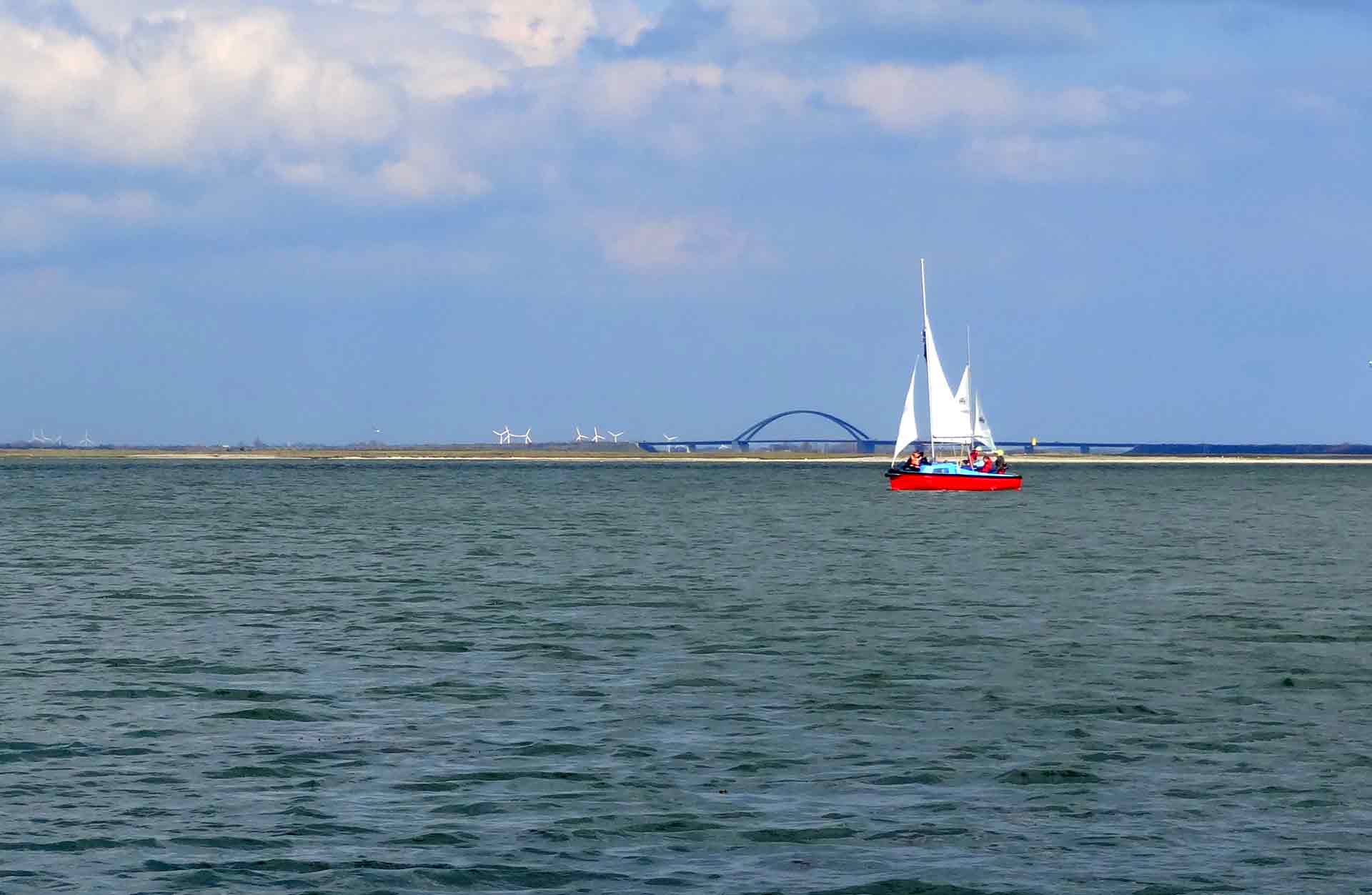
When we were close to completing the task, one of our crew was at the helm, altering course to the opposite direction. Quizzical looks: What the hack is she doing? “Special mission”, she answered. Ralph had secretly prepared her with bearings for a special course that would demand all of our abilities and put our sailing skills to a great test. Task was to cast off, sail to the gusty area, tack, round a certain buoy, run before wind to another buoy, tack again and make headway to the jetty, round the jetty, gain speed and berth again. So much to do! Everyone had to do the course at least one time. Great fun – great effort. A small adventure but great effect. When having the Menhir tied up again we all had nothing but big, fat and steady grin like a Cheshire cat on our faces.
This is how learning to sail should be like! I do so much look forward to our next weekend with Ralph: Two more days of intensive sailing, comradship and fun.
